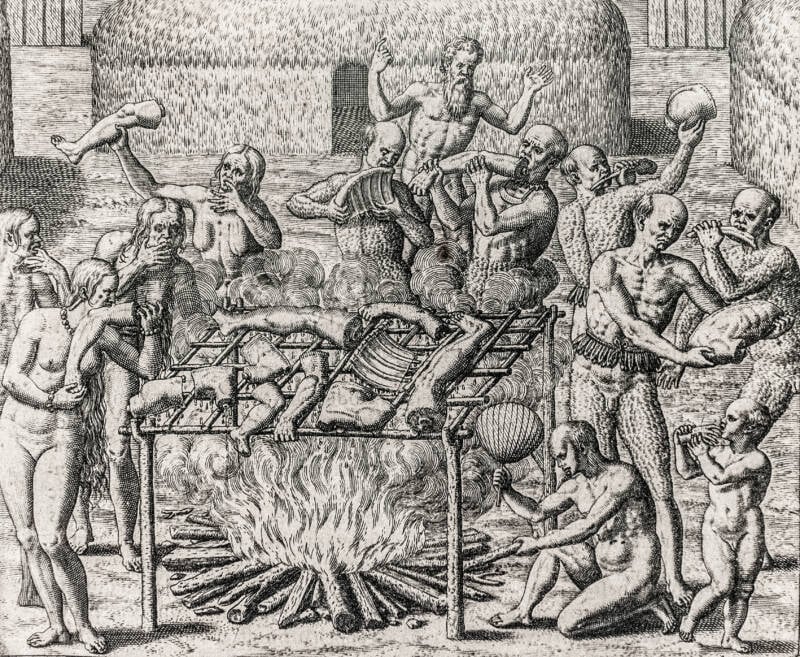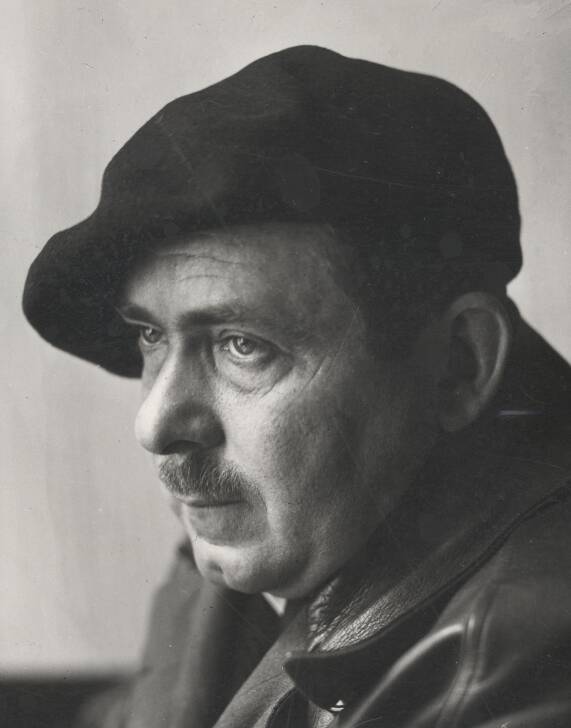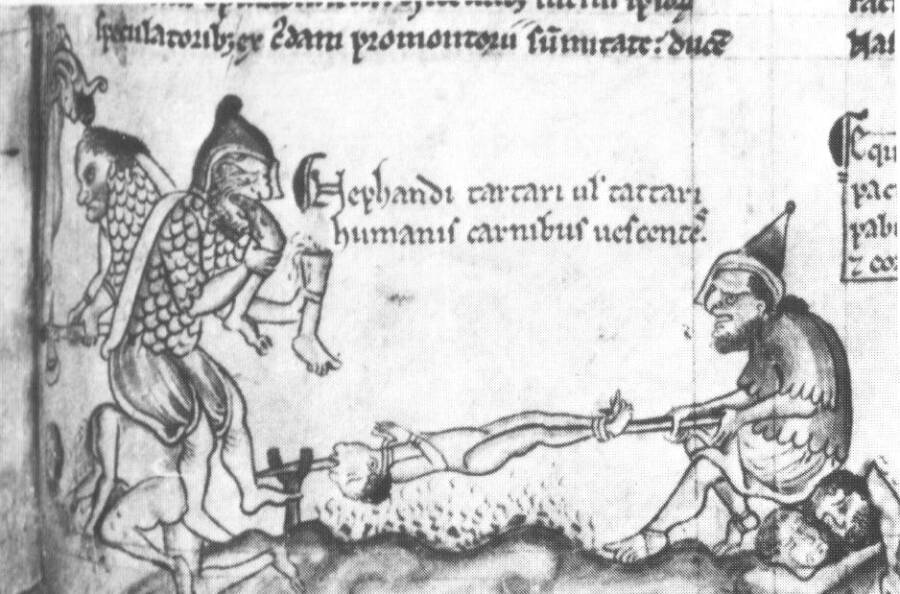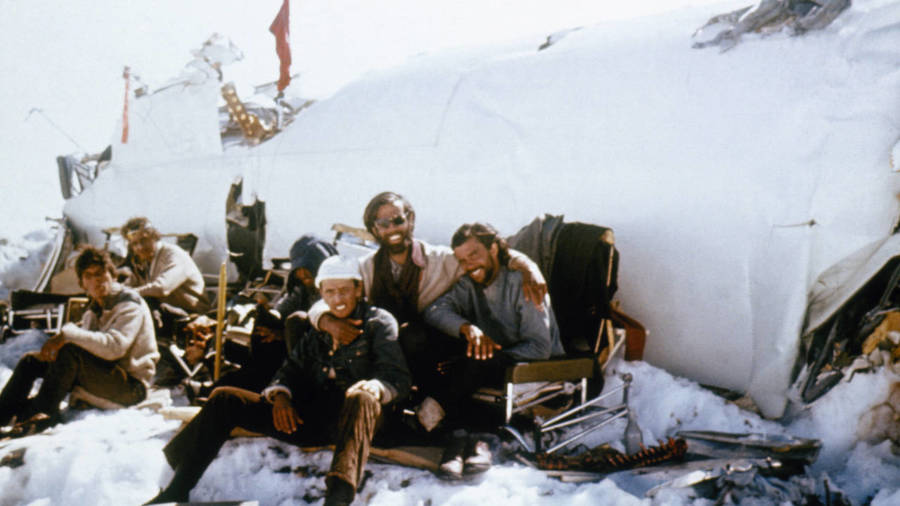Human flesh is technically considered red meat, and most cannibals say it tastes like pork with a consistency of beef — though others have compared it to everything from raw tuna to roast turkey.
In 1981, the Thomas Harris novel Red Dragon introduced audiences to Hannibal Lecter, a cannibalistic man known for literally having his friends for dinner. Later, Harris’ sequel novel The Silence Of The Lambs and its film adaptation would further popularize the fictional cannibal — and leave some morbidly curious fans pondering, “What does human taste like?”
Obviously, it would be better not to put this question to the test. While cannibalism is not technically a crime in the United States, the process by which any person would obtain or consume human meat is most certainly outlawed. Plus, it’s still rather frowned upon by most people.

Wikimedia CommonsAn engraving of human cannibalism by Theodor de Bry.
Still, that hasn’t stopped some from attempting to learn what this most taboo of meats tastes like. And as it turns out, a number of real-life cannibals have shared their experiences with this “meat” to satiate the curiosity of those who would never try it for themselves.
So, what do the experts have to say about human meat?
What Does Human Meat Taste Like?
Human flesh technically falls into the category of red meat and, by most accounts, has the consistency of beef. The taste, however, is much more subtle, according to anecdotes from people who have actually dined on human flesh.
In the 1920s, author and journalist William Seabrook traveled to West Africa, where he claimed in his book Jungle Ways to have met a cannibalistic tribe and sampled human meat.

Wikimedia CommonsWilliam Seabrook, the journalist who allegedly partook in cannibalism.
However, there is some doubt regarding the credibility of Seabrook’s account, as he later confessed that the cannibal tribe he interacted with never trusted him enough to let him partake in their traditions.
Rather, after his journey, Seabrook claimed he obtained some human meat from a friend at a Paris hospital morgue — and cooked it himself. This is what he said human tastes like:
It was like good, fully developed veal, not young, but not yet beef. It was very definitely like that, and it was not like any other meat I had ever tasted. It was so nearly like good, fully developed veal that I think no person with a palate of ordinary, normal sensitiveness could distinguish it from veal.
It was mild, good meat with no other sharply defined or highly characteristic taste such as for instance, goat, high game, and pork have. The steak was slightly tougher than prime veal, a little stringy, but not too tough or stringy to be agreeably edible.
The roast, from which I cut and ate a central slice, was tender, and in color, texture, smell as well as taste, strengthened my certainty that of all the meats we habitually know, veal is the one meat to which this meat is accurately comparable.
Whether Seabrook truly ate a body he had acquired from a hospital or not, his description remains one of the most detailed, at least from what could be considered an academic perspective.
However, there are other accounts from cannibals who did not approach this foul meal from the perspective of a journalist or academic, but rather due to an insatiable desire to chow down on human flesh.
How Do Cannibals Describe The Taste Of Human Meat?
Armin Meiwes, who ate nearly 40 pounds of meat from a man who actually agreed to be his meal, said once in a prison interview that human flesh tastes rather like good pork, only a bit more bitter.
“The first bite was, of course, very strange,” he said, according to The Independent. “It was a feeling I can’t really describe. I’d spent over 40 years longing for it, dreaming about it. And now I was getting the feeling that I was actually achieving this perfect inner connection through his flesh. The flesh tastes like pork but stronger.”
Issei Sagawa, who spent most of his life as a free man in Tokyo, spent two days eating a 25-year-old woman he had killed as a student in Paris in 1981.

Noboru Hashimoto/Corbis via Getty ImagesIssei Sagawa claimed human tasted like raw tuna.
Afterward, he spoke at length about what human meat taste likes. He has said that the buttocks melted on his tongue like raw tuna and that his favorite meat was the neck. However, he also said that he didn’t like the breasts because they were too greasy.
A few infamous cases from the 1920s in Europe also seem to indicate a pork-like flavor profile.
Prussian serial killer Karl Denke reportedly sold the meat of some 40 victims at a village market, marketing it as pickled “pork.” German murderers Fritz Haarmann and Karl Grossmann also marketed their “products” as pork on the black market, with the latter even selling his meat from a hot dog stand.

Wikimedia CommonsThe question “What does human taste like” is best left unexplored.
Two other anecdotes, both from America, suggest that human meat is very sweet to the taste. Alferd Packer allegedly murdered and ate five members of his Rocky Mountains expedition in the late 1800s when provisions ran low. The explorer later told a journalist in 1883 that the breast muscle was the sweetest meat he had ever tasted.
Omaima Nelson, who killed and allegedly ate her abusive husband in 1991, said his ribs were very sweet. However, that could have been because of the barbecue sauce she supposedly smothered them in.
But while eating humans for meat is considered one of the greatest taboos in Western culture, there have been some unfortunate circumstances throughout history which necessitated cannibalism — and the accounts are harrowing.
Times Humans Were Forced To Eat Each Other To Survive
Sailors called the practice “the custom of the sea.” The idea was that if provisions were running low or there was an emergency at sea with no possible rescue in the foreseeable future, crew members would cast lots to determine which person would be killed and eaten first.
This custom went on for centuries, up through the late 1800s. That’s because, at the time, sailors generally had no idea when they would see land again if they became lost or stranded. Sometimes, crews would cannibalize people who were already dead, thereby obviating the need to draw lots. Just as in nature, no good meat went to waste.
The custom effectively became illegal in 1884, when two survivors of a yacht wreck were convicted of killing a cabin boy for food. However, it’s likely that other sailors continued the practice secretly. And the precedent set by the case did not rule out eating people who were already dead.

YouTubeSurvivors of the Uruguayan Air Force Flight 571 air disaster.
Cannibalism actually saved the lives of the 16 survivors of the 1972 Uruguayan Air Force Flight 571 air disaster. The crash site was so remote that it took rescuers 72 days to find the survivors.
It was only by eating the 29 dead that those 16 people lived to tell the tale. The decision to turn to cannibalism did not come lightly. Some of the dead were friends, colleagues, and teammates of those who lived, and the survivors felt nauseated by the very thought of what they were doing.
The survivors dried the meat in the sun, gradually eating the flesh when they had the courage to do so. Even more than five decades later, the memory of eating their fellow passengers still haunts some of the survivors. Eduardo Strauch later reported in his 2019 memoir Out of the Silence that the meat was tough, tasteless, and odorless.
“I swallowed it with disgust,” Strauch wrote. “I felt my entire body rejecting that tiny bite… a taboo thousands of years old had been crushed in my mouth.”
But whatever human tastes like, be it pork, veal, or, as Strauch claimed, not much of anything, for obvious moral concerns, it’s probably best to take these accounts at face value.
Now that you know the answer to what humans taste like, discover the chilling story of the SS Dumaru, the doomed ship whose survivors resorted to cannibalism. Then, learn about whiskey heir James Jameson’s dark history of cannibalism and the murder of Michael Rockefeller at the hands of cannibals.





